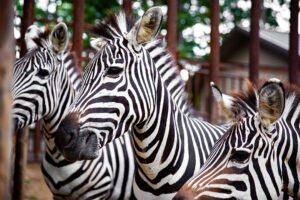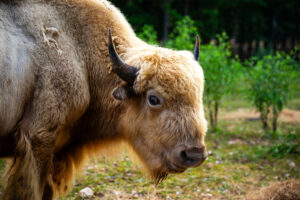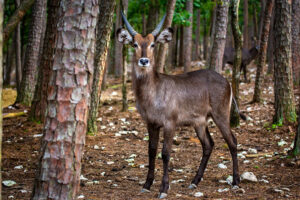
Meet the animals
Learn more about the animals at Beavers Bend Safari Park!
Rhino
Meet the Rhino
Rhinos are large, thick-skinned herbivores native to Africa and Asia. They are known for their prominent horns, which are made of keratin (the same material as human hair and nails). There are five species of rhinos, two in Africa (the White Rhino and the Black Rhino) and three in Asia (the Indian Rhino, the Javan Rhino, and the Sumatran Rhino).
Fun Facts:
- Horns Are Not True Horns: Rhino horns are composed of keratin, unlike true horns, which have a bony core. They can grow throughout a rhino’s life.
- Poor Vision, Keen Sense of Smell: Rhinos have poor eyesight but an excellent sense of smell and hearing, helping them detect predators or other rhinos from a distance.
- Thick Skin, Thin Epidermis: Their skin is about 1.5 to 5 centimeters thick but is very sensitive to sunburn. Rhinos often wallow in mud to protect their skin from the sun and parasites.
- Social Behaviors: White rhinos are more social and often found in groups, while black rhinos are more solitary.
- Conservation Status: Several rhino species are critically endangered due to poaching and habitat loss, making conservation efforts crucial for their survival.
Rhinos are truly remarkable animals, both in their physical adaptations and their place in the ecosystem.
About the Rhino
Rhinos are some of the biggest animals in the world! The largest of the five species that call our planet home is the white rhino, which can weigh as much as 30 men. They typically can be found living in Africa, or in the tropical forests and swamps of Asia, depending on the species. For the most part, rhinos are solitary animals and tend to avoid each other. Some species may live in a group called a “crash”. They can typically be found sleeping in the shade or wallowing in muddy pools to cool off during the hottest parts of the day. Rhinos love to get muddy, as it protects their skin from the strong sun and keeps bugs away.
| Height | 4’4″ to 6’1″ |
| Weight | 1,102 to 5,511 pounds |
| Diet | Grasses, plants |
| Gestation Period | 15-18 months |
| Life Span | 35 to 50 years |
| Threats | Poaching, habitat loss |
Tags :

WELCOME TO BEAVERS BEND SAFARI PARK
Nestled in 90 acres in Broken Bow, OK, Beavers Bend Safari Park is home to a variety of animals like Bison, Zebra, Ostrich, Zubu, Deer, and more.
Animal Selection
Latest Animals


White Bison

Waterbuck

Springbok
Newsletter
Never miss out on news and special events at Beavers Bend Safari Park!

